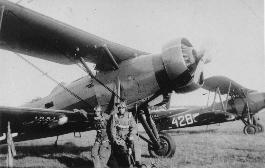 |
Letov S-328, the 108th production Shmolleek. An bomber version powered by a 580 Walter Pegas II M-2 engine could carry the bombload of even 500 kg under the range of 340 up to 1250 km. Dimensions : Span 13.71 m, length 10.36, empty weight 1680 kg Performance : Top speed 380 km.p.h., climb to 5 000 m in 17 mins
|
| |
|
|
The 99th production Avia B-534 was tested for use of a Letov-made metal propeller. The Nos I-II batches being built from Feb 1935 were equipped by wooden propellers, the Nos III-IV batches with composite ones. Only cockpit of some machines of the Nos I-II batches were covered by canopy.
|
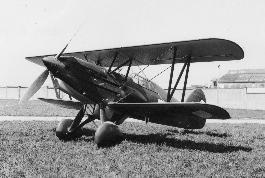 |
| |
|
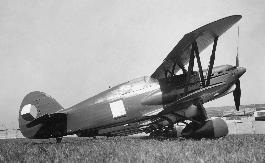 |
An 190th production B-534 fighter, the fourth one armed by four machine guns. The machines being turned out from 1936 were of higher empty as well as take-off weights, top speed, service ceiling and climb up to 5 000 m. Two machine guns typical for the first 100 pcs batch in the lower wing were mounted into both sides of the fuselage.
|
| |
|
|
A prototype of S-431. This type was not production one at all. Dimensions : Span 10.06 m, length 7.9 m, empty weight 1310 kg Powerplant : a 680 Siddeley Tiger, wooden two-blade propeller compared with a S-331 type Performance : Top speed 370 km/p/h, climb to 5 000 m in 6 min 58 sec, service ceiling of 9 500 m
|
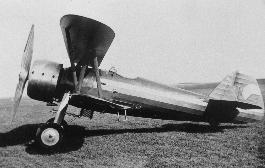 |
| |
|
 |
Praga E-39.21, the 21st production one, the batch powered by a Walter Gamma engine. There were several kinds of powerplant used for this type. A shot of a flying instructor. M stands for the No 1 Training Flight. In several cases the code name of BH-39 after her designers Benes and Hajn is used in this type. Militarily coded by the letter E.
|
| |
|
|
An Avia Ba-422 was specially built in the two-pcs batch on the occasion of the 1938 France Aeronautical World Championship. The upper wing was lowered at the fuselage-width so that the pilots could see properly while flying in a diverted position. Czech aeronaut Frantisek Novak raked at St. Germain 806 points at first, ahead of an German Hagenburg by 21 and a French pilot Cavalli by 122 ones. The verdict of the jury was later changed in Hagenburg`s favour – Novak was penalized for would be extending time limit. Also under these circumstances bravado was shown by the King of the Air and he reacted with smile. Span 8.85 m, length 6.80 m, empty weight 903 kg Powerplant : an 440 hp Avia Rk-17 Performance : service ceiling 7 000 m, range 460 km
|
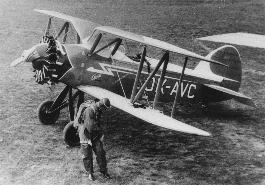 |
| |
|
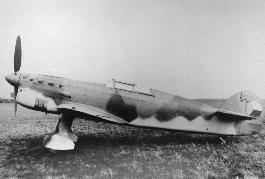 |
The first prototype of an Avia B-35 fighter was fligt-tested during the Sept 1938 Allert. Fuselage : screwed and riveted steel-tube-structure, covered by fabric, from the cockpit forwards covered by removable aluminium sheet plates Wings comprised two wooden longerons, wooden skeletal structure and covered by a thin alclad sheet
|
| |
|
|
The first prototype of an Avia B-35 monoplane on which Sgt. Kavalec lost his life. Performance was influenced by the fix hoooded undercarriage. The version of the B-35 type with retractable undercarriage was brought in complexion after the Germans occupied the Czech and Moravian Lands on March 15, 1939, coded as B-135. Twelve planes of this type as well as the B-135 licence was bought by a Bulgarian-pro-Nazi puppet regime. Powerplant : a 750 Avia Hispano Suiza 12 Ycrs, two-blade wooden or composite propeller. Performance : Top speed 495 km.p.h., climb ratio 13 m/p/s, range 550 km, service ceiling of 8 500 m Armament : two synchronized machine guns
|
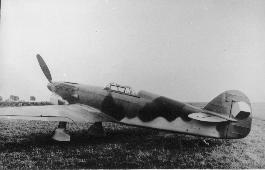 |
| |
|
|

|
Avia B-534 fighters assigned to the Prague Flight under 1938 Allert in Eastern Slovakia / courtesy of Martinek /. In addition to two side-fuselage-mounted machine guns, the Bk-534 type was armed also by a HS No 402 via propeller-axle shooting canon. Empty weight : 1631, loaded one of 2 222 kg respectively Powerplant : an Avia HS 12 Ycrs engine Performance : Top speed 375 km.p.h., range 500 km, rate of climb 15m/p/s, service ceiling 9 500 m
|
| |
|
|
A prototype of an Aero A-300 bomber was flight-tested in 1938. After March 15, 1939 it was confiscated by the Germans and production only in paper. Wood-framed wings covered by plywood, sheet metal plated steel frame of a tailplane Steel-tube –welded fuselage combined with sheet metal plates, fabric-covered Dimensions : 19.2 m, lenght 13.5. m , empty weight 3 955 kg Powerplant : two Bristol Mercury engine of 830 hp each Performance : Top speed : 470 km.p.h., climb to 5 000 m in 9 min 4 sec, service ceiling 8 300 m, range 900 – 2 200 km Bombload : up to 1 000 kg, Defensive : three machine guns
|

|
| |
|
 |
A shot of an Soviet original ANT 40.2 SB-2 fast bomber designed by Andrey Tupolev and A. A. Archangelskij. There were sixty of them in the Cz AF`s arsenal plus one machine in the Scientific Aeronautical Institute coded as B-71. Their licence had been purchased in the Soviet Union but production in the Avia Comp. was completed by the Germans after March 15, 1939. The Letov Company did not launch building aircraft of this type at all, though intended.
|
| |
|
TEXT Three
Recce S-228, 328 and 528 types as well as S-231 fighter, S-32 transport- and S-39 and S-239 sporting planes were turned out by the Letov Company in the 1931-1938 period.
The Aero Aeroplane Works built two prototypes of a A-102 fighter and production A-46 trainers, A-100, A-101, Ab-101 recce-bomber biplanes as well as A-304 monoplanes used for observing duties, A-300 monoplane bombers powered by the British Mercury IX engines, licensed Marcel Bloch MB-200 obsolete bombers and also licensed SB-2s in this time frame.
The A-304 type attained the top speed of 325 km/p/h. Fifteen planes built till the German occupation on March 15, 1939 were confiscated by the Germans and sent to kin countries, above all to Bulgaria.
An A-300 bomber reaching the maximum speed 470 km.p.h.and able to accommodate bombload of 1 000 kg
was tested by the Fockewulf Plant in Bremen and later scrapped.
Compared with the pointless purchase of the MB-200 licence when strings were pulled by politicians, the Soviet-licensed SB-2s were incomparably more advanced. Top speed achieved by Czech made “Katyushkas ” was nearly by 200 km/p/h higher compared with MB-200s. Fourty five machines of this type built by the Aero Works
were used by Luftwaffe or sent to Bulgaria. The B-71s were powered by Czech-made 680 Avia-Hispano Suiza engines and were able to accommodate the bombload of 600 kg under their wings.
As B-34+B-534 fighters, specially built Av-122+Av-122a aerobatic planes, licensed Fokker VII+F IX D trasporters + F IX bomber as Rohrbach licensed Av-46 and Soviet SB-2 one of B-71 were turned out during 1931- 1938 by the Avia Company. In addition, only three prototypes of the fixed-undercarriage-B-35 fighter attaining the maximum speed of 495 km/p/h were built here and a twelve pcs-batch of the B-135 fitted by a retractable undercarriage was made and sent to Bulgaria in the 1941 year.
There were built 70 production MB-200s there and later two batches of the B-71 bomber – 40 and 26 machines respectively. 30 SB-2s were purchased by the Czechoslovak Republic from the Soviet Union and in 1936 also their licence. The Avia-built B-71 fitted by here developed new tubullar radiators reached the speed by 15 km/p/h higher. Our idea was copied by the Soviets and brought into use in the SB-3 type. After the German occupation were the B-71s converted to target towing configuration.
Because all three Aeroplane Works within a range of German bombers were, a new plant was built at the village of Kunovice in South Moravia. B-534s were turned out here even in the year of 1937.
In the 1931-1938 time-frame planes were mass-produced also in the CKD Prague-Karlin Works, Studenka, Otrokovice and Chocen – in Karlin BH-39NZ, BH 39 G, BH-39AG, BH-41 and E-241 trainers + E-114 B and E-144G sporting planes. In Otrokovice Z-XII, at Studenka T-1 and T-101 and at Chocen B-60, B-50 and B-150 types.











